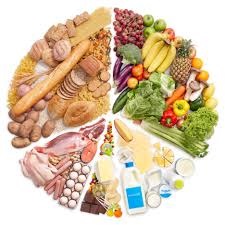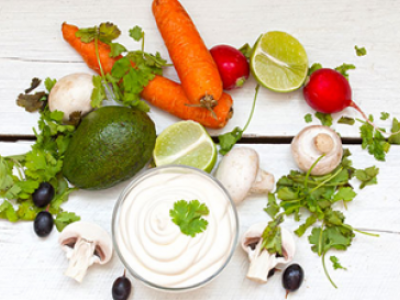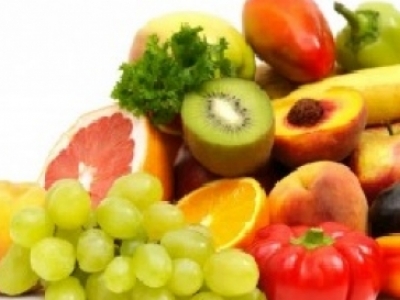Don't miss
Other articles
Almost everyone who has ever been to a cafe, restaurant, canteen at work or gastronomy was tempted by the appetizing look of steaming barbecue, lasagna, ice cream, and had to barely make a choice in favor of a particular dish.
What is so amazing about these blue - green algae and why is it firmly usurped the place of one of the most useful foods? DiningSmart team will gladly tell you all about it.
The truth about the most popular sauce in the world – DiningSmart will tell you everything about mayonnaise in this article!
The daily requirement for vitamins is calculated in milli- or micrograms, butits contribution to our physical and mental well-being is enormous.
How to feed school kids. A note to parents

Dear parents!
A prerequisite for normal growth and development of your child is a healthy diet. If you want your child to grow up strong, smart and active in school – thoroughly compose daily menu and pay more attention to what he/she eats. School age is a key period in the development of the child's body. Self-confidence, success in learning, concentration and ability to memorize is directly dependent on diet. Children are in a constant state of growth and development, so the food they need, not only for their livelihoods, but also for the growth and development of the organism. Defective or improperly organized food slows the growth, lowers resistance to harmful environmental influences and thus increases the morbidity. The value of a balanced diet is also crucial in condition of a large teaching load. Students’ life is full of new information, differs with rapid pace and requires significant efforts not only in school but also at home. That is why it is very important that daily diet provides the body with the necessary amount of child nutrition and full recovery.
Children's need for energy and essential nutrients
Daily need for energy
| Age | Daily need for energy for1 kg of body mass |
| 6—9 years | 80 kcal |
| 10— 13 years | 75 kcal |
| 14—17 years | 65 kcal |
The main feature of a balanced diet is proper balance of nutrients (proteins, fats, carbohydrates, vitamins and minerals), depending on the age, sex, and other energy factors. The school feeding ratio of proteins, fats and carbohydrates should be 1: 1: 4.

Assessing the balance of protein in the diet of schoolchildren must proceed from the fact that the total amount of protein should be at least 14% of the daily energy needs. Animal protein in the diet of a 6-year-old child should be 65% in other age groups - at least 60% of the total (daily) quantity. Therefore, the daily menu of the child and the teenager must include animal products: meat, fish, eggs, milk and derived products (cheese, butter, yogurt, etc.). These products fully meet the needs of the growing organism in proteins, subject to receipt of a sufficient amount of vegetable proteins, which are rich in legumes, whole grains, nuts and seeds (sunflower, pumpkin, flax).
The need for students in fats is the same as proteins and the ratio of protein and fat is an average of 1: 1. Function of fats in schoolchildren’s diet is diverse. They are sources of energy required in childhood, phosphatides and polyunsaturated fatty acids as well as vitamins A, D and E, and at the same time provide a better absorption of these vitamins. Furthermore, they are used for purposes of plastic, in particular for the construction of nervous tissue and brain tissue.
The share of animal fats in the diet of schoolchildren should fall within 60-80% of the total fat. It’s mostly dairy fats (butter). Do not use beef, mutton, duck and goose fat. They inhibit the secretion of digestive juices, long linger in the stomach and intestines, and impair the absorption of other food components. Vegetable oils should constitute 20-40% of the total fat content in the diet. By the number of polyunsaturated fatty acids, vegetable oils are fats of high biological value.
Schoolstudents require significant energy consumption because of their age and the high activity of motor and cognitive processes, and carbohydrates are the main source of energy for muscle activity. The share of carbohydrates should account for 55-60% of the daily dietary energy, or about 280-400 grams per day. The main requirement for carbohydrates to be covered by the complex carbohydrates contained in grains, legumes and potatoes. Balance of carbohydrates in a balanced diet of schoolchildren should be as follows: complex carbohydrates - 75% digestible carbohydrates - 20, pectin - 3%, cellulose - 2% of the total amount of carbohydrates.
And of course, we shouldn’t forget about vitamins and minerals, these substances, some of which body requires in very small quantities, nevertheless play an important role in maintaining health and normal function of all organs and systems, mental and physical development. In order to ensure the child's body with vitamins and minerals needed in the diet a wide range of products should be included. For example, fruits and vegetables are a source of vitamin C and a number of trace elements, and whole-grain foods are rich in B vitamins, animal foods such as liver, butter, eggs - an excellent source of vitamin A and D.
Diversify and balance diet

- Animal products: meat, fish, eggs, milk and dairy products (cheese, butter, yogurt, etc.).
- Herbal products - vegetable oil, potatoes, vegetables, fruits, berries, herbs, flour, cereals.
- Schoolchildren should have meals 4-5 times a day with 3-4 hour intervals. The following is a possible schedule of meals during school:
| Meals | Classes in the morning | Classes in the afternoon |
| Breakfast | 7.30- 8.00 | 9.00 – 9-30 |
| Snack | 11.30 – 12.00 (during the long break) | - |
| Lunch | 14.30 – 15.00 | 12.30 – 13.00 |
| Snack | - | 16.00 (during the long break) |
| Dinner | 19.00 – 19.30 | 19.30-20.00 |
- The most important is the breakfast, which must be complete. Unfortunately, many children run away to school, grabbing a sandwich on the run, a roll or, even worse, some sweets, and the parents do not give it much importance, hoping for a school breakfast. This violation of diet not only affects the health of the child, but also reduces its efficiency, hampers the absorption of the material in school. Student’s breakfast must be sufficiently nutritious and include a dish of cheese, eggs and milk porridge.
- At lunch, give your child more vegetables, including salads, raw vegetables and fruits, be sure to include meat or fish dish garnished with vegetables, grains or pasta and beverages: juice, juice or jelly.
- At lunch offer milk, dairy products, jelly or juice with bakery products (biscuits, low-fat cookies) or fruit.
- Dinner - dairy, vegetables, cottage cheese, egg, or groats dish, fresh vegetables, fruits and berries. Dinner should be no later than 1.5-2 hours before bedtime.
- If the child wants to eat before going to bed - you can give him a glass of skim milk / yogurt or a banana.
The average daily set of products recommended for children of school age [1]
| Product | Содержание в суточном рационе |
| Vegetables, greens | 400 g |
| Fresh fruits | 200 g |
| Milk and dairy | Up to 500 ml |
| Grains, legumes (dry) | Up to 50 g |
| Pasta | 20 g |
| Bakery products | Up to 300 g |
| Potatoes | 250 g |
| Meat | 100 g |
| Butter | 35 g |
| Vegetable oil | 20 g |
| Cottage cheese, cheese (up to 20 g), sour cream (up to 20 g) | total 80 g |
| Egg | 1 |
[1] For the product of the gross mass or prior to heat treatment
Other articles
Almost everyone who has ever been to a cafe, restaurant, canteen at work or gastronomy was tempted by the appetizing look of steaming barbecue, lasagna, ice cream, and had to barely make a choice in favor of a particular dish.
What is so amazing about these blue - green algae and why is it firmly usurped the place of one of the most useful foods? DiningSmart team will gladly tell you all about it.
The truth about the most popular sauce in the world – DiningSmart will tell you everything about mayonnaise in this article!
The daily requirement for vitamins is calculated in milli- or micrograms, butits contribution to our physical and mental well-being is enormous.









